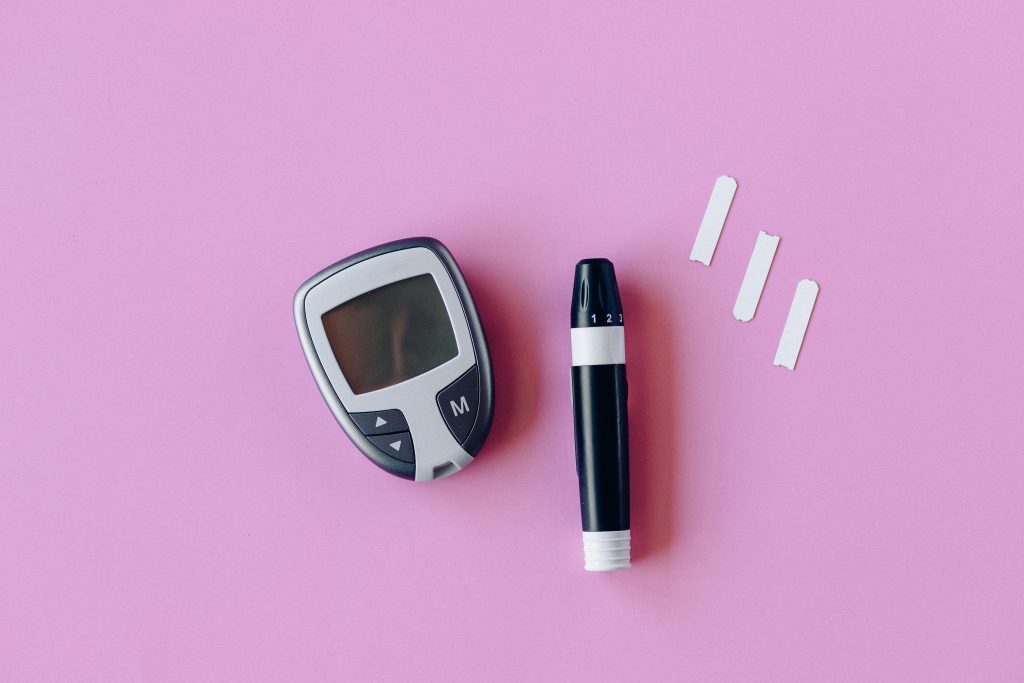Table Of Contents
-
Key Highlights
- Understanding How Semaglutide Works for Weight Loss
-
Typical Timeline for Weight Loss Results with Semaglutide
- Factors Affecting How Quickly Semaglutide Works
- Clinical Trial Evidence on Semaglutide Weight Loss Onset
- Real-World Patient Experiences and Weight Loss Progress
- Managing Expectations: What to Do If Weight Loss Is Slow
-
Frequently Asked Questions
-
Conclusion: Setting Realistic Expectations for Your Semaglutide Journey
-
References
If you’ve just started semaglutide or you’re considering this weight loss medication, you’re probably wondering: when will I actually see results? It’s one of the most common questions patients ask, and the answer isn’t as simple as “one week” or “one month.” The timeline for semaglutide weight loss varies from person to person, but clinical research gives us solid benchmarks to set realistic expectations.
Semaglutide has become a game-changer in obesity management, but understanding when you’ll start seeing the numbers on the scale drop requires looking at both clinical trial data and real-world patient experiences. In this comprehensive guide, we’ll break down exactly when semaglutide typically starts working, what factors influence your individual timeline, and what you should realistically expect during your weight loss journey.
Key Highlights
- Initial weight loss timeline: Most patients begin to see measurable weight loss within 4 to 6 weeks of starting semaglutide treatment, though results vary individually.
- Dose escalation matters: The gradual increase to the therapeutic 2.4 mg weekly dose over 12 to 16 weeks directly influences how quickly you’ll see results, as lower starting doses have milder effects.
- Progressive weight loss: Clinical trials show average weight loss of 5-10% of body weight by 12 weeks, increasing to 15% or more by 68 weeks with consistent use.
- Long-term sustainability: Real-world data confirms weight loss maintenance and continued progress up to 24 months with ongoing treatment.
- Individual variation: Your personal response depends on factors like diet adherence, exercise habits, metabolic rate, and genetic factors—no two journeys are identical.
- Side effects precede results: Many patients experience early side effects like nausea and GI symptoms before noticing significant weight loss on the scale.
- Lifestyle amplifies results: Combining semaglutide with consistent dietary changes and regular physical activity optimizes both the speed and extent of weight loss.
Understanding How Semaglutide Works for Weight Loss
Before we dive into timelines, it’s important to understand the science behind semaglutide’s weight loss effects. Semaglutide is a GLP-1 receptor agonist—a medication that mimics a naturally occurring hormone called glucagon-like peptide-1. This hormone plays several crucial roles in appetite regulation and metabolism.
When you take semaglutide, it works through multiple mechanisms. First, it acts on receptors in your brain’s appetite control centers, specifically the hypothalamus, reducing feelings of hunger and increasing feelings of fullness after meals. This isn’t just willpower—it’s a biological change in how your brain processes hunger signals.
Second, semaglutide slows gastric emptying, which means food stays in your stomach longer. This extended feeling of fullness, called satiety, naturally leads to eating less throughout the day. According to research on GLP-1 agonists, this dual action on appetite and digestion creates a powerful effect for weight reduction.
Additionally, semaglutide may influence metabolic processes, including how your body uses and stores energy. While the primary mechanism is appetite suppression, these metabolic effects contribute to overall weight loss. The medication doesn’t “burn fat” directly—instead, it creates the biological conditions that make sustainable caloric reduction possible without the constant battle against hunger that derails many diet attempts.
The Dose Escalation Process
Unlike some medications that start at full therapeutic dose, semaglutide follows a gradual escalation schedule. This is critical to understanding your weight loss timeline. The typical semaglutide dosage schedule starts at just 0.25 mg weekly and increases every 4 weeks:
- Weeks 1-4: 0.25 mg weekly (introductory dose to minimize side effects)
- Weeks 5-8: 0.5 mg weekly (first increase)
- Weeks 9-12: 1.0 mg weekly (mid-range dose)
- Weeks 13-16: 1.7 mg weekly (near-therapeutic dose)
- Week 17+: 2.4 mg weekly (full therapeutic dose for weight loss)
This gradual approach serves two purposes: it reduces the intensity of GI side effects like nausea, and it allows your body to adjust to the medication’s effects. However, it also means that maximum weight loss effects won’t occur immediately—you’re building up to the therapeutic dose over about four months.
Typical Timeline for Weight Loss Results with Semaglutide
Now for the question you’ve been waiting for: when does the weight actually start coming off? Based on clinical trial evidence, here’s what most patients can expect:
Semaglutide Weight Loss Timeline
Weeks 1-4: Initial Adjustment
Dose: 0.25 mg weekly
Expected Weight Loss: Minimal (0-2% body weight)
During the first month, you’re on the lowest dose. Many patients notice reduced appetite and some experience side effects like mild nausea. Weight loss is typically modest—some people see 2-5 pounds, while others see minimal change. This is normal and expected.
Weeks 4-8: Weight Loss Begins
Dose: 0.5 mg weekly
Expected Weight Loss: 2-4% body weight
As you increase to 0.5 mg, most patients start seeing more consistent weight loss. You’ll likely notice appetite suppression becoming more pronounced. Average weight loss reaches 4-8 pounds for a 200-pound person by the end of this period.
Week 12: First Major Milestone
Dose: 1.0 mg weekly
Expected Weight Loss: 5-10% body weight
By three months, you’re at 1.0 mg weekly, and this is where results become more visible. Clinical trials show average weight loss of 5-10% of initial body weight by this point. For someone weighing 220 pounds, that’s 11-22 pounds lost.
Week 24: Six-Month Results
Dose: 2.4 mg weekly (full dose)
Expected Weight Loss: 10-15% body weight
At six months, you’ve been at the full therapeutic dose for several weeks. Real-world studies show average weight loss of 13.4% at this point—approximately 29 pounds for a 220-pound starting weight.
Week 52: One Year Mark
Dose: 2.4 mg weekly (maintenance)
Expected Weight Loss: 15-17% body weight
At one year, clinical data shows average weight loss plateaus around 15-17%. Real-world data indicates 17.6% average weight loss, or about 38-39 pounds for someone starting at 220 pounds.
Week 68: Long-Term Results
Dose: 2.4 mg weekly (maintenance)
Expected Weight Loss: 15-20% body weight (or more)
The landmark STEP 1 trial showed average 12.4% weight loss at 68 weeks with 2.4 mg weekly. However, some patients achieve even greater results—case reports document over 30% weight loss over 65 weeks in certain individuals.
It’s crucial to understand that these are averages. Your personal semaglutide weight loss timeline may be faster or slower depending on various factors we’ll discuss next. Some patients see dramatic results early on, while others have a slower, steadier trajectory that ultimately reaches the same destination.
Factors Affecting How Quickly Semaglutide Works
Why does semaglutide work faster for some people than others? Several key factors influence your individual response to the medication. Understanding these can help you optimize your results and set realistic expectations.
1. Adherence to Dosing Schedule
This might seem obvious, but consistent weekly injections are critical. Semaglutide has a long half-life, but skipping doses or irregular administration can disrupt the steady medication levels needed for optimal appetite suppression. Missing even one or two doses can set back your progress by weeks.
Set a specific day and time each week for your injection—many patients find that Sunday evenings work well, giving them the weekend to manage any side effects. Use phone reminders and keep your medication visible as memory aids.
2. Dietary Habits and Caloric Intake
Semaglutide reduces hunger, but it doesn’t eliminate your ability to eat. If you consistently override the satiety signals—eating when you’re not hungry or choosing calorie-dense foods—you’ll see slower results. The medication works best when you honor your reduced appetite and make nutrient-dense food choices.
Focus on protein-rich foods, vegetables, and whole grains. These satisfy hunger more effectively and support muscle preservation during weight loss. Avoid liquid calories (sodas, juice, alcohol) which don’t trigger the same satiety response as solid food.
3. Physical Activity Level
While semaglutide works primarily through appetite suppression rather than increased calorie burn, adding regular exercise accelerates weight loss and improves body composition. Patients who combine semaglutide with consistent exercise lose weight faster and maintain more lean muscle mass.
You don’t need intense workouts—even 30 minutes of daily walking makes a significant difference. Resistance training 2-3 times per week helps preserve muscle as you lose fat, improving your metabolic rate and overall body shape.
4. Starting Weight and Body Composition
Individuals with higher starting BMI often see faster initial weight loss in pounds, though the percentage of body weight lost tends to be similar across BMI categories. Someone starting at 300 pounds will likely lose more pounds in the first three months than someone starting at 180 pounds, but both might achieve similar percentage reductions.
Metabolic health status also matters. People with insulin resistance or metabolic syndrome may experience slightly different timelines as semaglutide also improves insulin sensitivity.
5. Individual Metabolic Response
Genetics, hormone levels, medication interactions, and individual variations in GLP-1 receptor sensitivity all influence how quickly you respond to semaglutide. This is why two people following identical protocols can have different timelines—biology isn’t one-size-fits-all.
Certain medications (like corticosteroids or some psychiatric drugs) can slow weight loss. Thyroid function, sleep quality, and stress levels also play roles. If you’re not seeing expected results, discuss these factors with your healthcare provider.
Clinical Trial Evidence on Semaglutide Weight Loss Onset
Let’s look at the hard data. The STEP (Semaglutide Treatment Effect in People with Obesity) clinical trials provide the gold standard evidence for when semaglutide starts working for weight loss.
The STEP 1 trial enrolled 1,961 adults with obesity or overweight with at least one weight-related condition. Participants received either semaglutide 2.4 mg weekly or placebo, both with lifestyle intervention.
Key findings at 68 weeks:
- Average weight loss: 12.4% with semaglutide vs. 2.4% with placebo
- Significant weight loss (≥5%): 86.4% of semaglutide patients achieved this
- Substantial weight loss (≥10%): 69.1% reached this milestone
- Major weight loss (≥15%): 50.5% of patients lost at least 15% of body weight
- Exceptional results (≥20%): 32% achieved 20% or greater weight loss
Weight loss was not linear—it was steepest in the first 20 weeks (during dose escalation), then continued at a slower but steady pace through month 18. Most patients hadn’t reached their maximum weight loss by week 68, suggesting potential for continued improvement beyond this timeframe.
Additional STEP Trial Insights
The STEP 2 trial specifically studied adults with type 2 diabetes and obesity. These patients showed slightly slower weight loss—averaging 9.6% at 68 weeks—but still achieved clinically significant results. This demonstrates that semaglutide works effectively even in populations with more metabolic challenges.
The STEP 4 trial examined weight loss maintenance after initial treatment. Patients who continued semaglutide maintained their weight loss, while those switched to placebo regained two-thirds of lost weight within a year. This underscores that semaglutide is a long-term treatment, not a temporary intervention.
Real-World Patient Experiences and Weight Loss Progress
Clinical trials are controlled environments—what about real-world results? Fortunately, recent observational studies have tracked semaglutide users in everyday clinical practice, and the results are encouraging.
Real-World Weight Loss Data
A 2024 real-world effectiveness study published in PubMed tracked semaglutide users over 24 months. The findings showed:
- 6-month average: 13.4% weight loss
- 12-month average: 17.6% weight loss
- 24-month results: Weight loss maintained at 16-18% range
- Dropout rate: Lower than clinical trials, suggesting good real-world tolerability
Interestingly, real-world results slightly exceeded trial outcomes at the 12-month mark. Researchers hypothesize this might be due to longer time on the maximum dose in clinical practice, or potentially because motivated real-world users implement more aggressive lifestyle changes.
Exceptional Responders
A fascinating case study published in 2024 documented a patient who achieved over 30% body weight loss over 65 weeks with semaglutide 2.4 mg weekly. The patient went from 286 pounds to 195 pounds—a 91-pound weight loss.
What made this patient an exceptional responder? The case report highlighted several factors: excellent medication adherence, significant dietary restructuring, incorporation of regular exercise (started with walking, progressed to strength training), and strong psychosocial support. This demonstrates that while semaglutide is powerful, combining it with comprehensive lifestyle changes can produce dramatic results.
Common Patient Experiences
Beyond the numbers, what do patients typically report about their experience?
- “Food noise” reduction: Many describe a profound decrease in constant thoughts about food and reduced cravings
- Natural portion reduction: Feeling satisfied with smaller portions without feeling deprived
- Reduced emotional eating: Better ability to distinguish physical hunger from emotional hunger
- Side effects vary: Nausea affects about 44% of users but typically resolves within weeks
- Energy changes: Some report fatigue early on, which often improves as weight comes off
Patient forums consistently show that results don’t match clinical trial curves perfectly—some lose weight faster, others slower. However, nearly all patients who stick with the medication for six months report meaningful weight loss and improved relationship with food.
Managing Expectations: What to Do If Weight Loss Is Slow
What if you’ve been on semaglutide for three months and haven’t lost the expected 5-10% of your body weight? First, don’t panic—individual variation is normal. However, there are steps you can take to optimize your results.
Evaluate Your Lifestyle Factors
Before assuming the medication isn’t working, honestly assess these areas:
- Calorie tracking: Spend one week meticulously tracking everything you eat and drink. You might be consuming more than you realize, even with reduced appetite.
- Liquid calories: Alcohol, sweetened beverages, coffee drinks, and smoothies can add hundreds of hidden calories that don’t trigger satiety.
- Medication timing: Are you taking your weekly dose consistently, or have you missed any?
- Sleep quality: Poor sleep disrupts hunger hormones and can blunt weight loss—aim for 7-9 hours nightly.
- Stress levels: Chronic stress elevates cortisol, which can promote fat retention, especially around the midsection.
Medical Factors to Discuss with Your Doctor
If lifestyle optimization doesn’t accelerate your weight loss, schedule a discussion with your healthcare provider about:
- Thyroid function: Hypothyroidism can significantly slow weight loss, even with semaglutide.
- Other medications: Certain drugs (corticosteroids, some antidepressants, antipsychotics) can interfere with weight loss.
- Metabolic conditions: PCOS, Cushing’s syndrome, or other hormonal disorders may require additional management.
- Dose optimization: Some patients benefit from staying at intermediate doses longer before escalating.
- Combination therapy: In some cases, combining semaglutide with other interventions may be appropriate.
Research published in The New England Journal of Medicine suggests that personalized approaches to GLP-1 therapy may improve outcomes for slower responders. Don’t hesitate to advocate for adjustments to your treatment plan.
Realistic Timeline Expectations
Remember that “slow” weight loss with semaglutide might still be faster than any previous attempt. Losing 1-2 pounds per week is actually excellent progress, even if you hoped for more. Sustainable weight loss typically occurs at 1-2% of body weight per week—faster losses often include water weight and may not be maintained.
Give the medication adequate time. The full therapeutic dose isn’t reached until 16-20 weeks, and maximum effects often aren’t seen until 6-9 months. If you’ve only been on semaglutide for 8-12 weeks and are losing any weight at all, you’re likely on track for good long-term results.
Frequently Asked Questions
Most patients begin seeing measurable weight loss within 4 to 6 weeks of starting treatment. However, you’re on a low introductory dose during this time (0.25-0.5 mg), so initial weight loss is typically modest—around 2-5 pounds. More significant weight loss usually begins after 8-12 weeks as you reach higher doses. The appetite-suppressing effects often become noticeable within the first 1-2 weeks, even before the scale changes dramatically.
The typical timeline shows 5-10% weight loss by 12 weeks, 10-15% by 24 weeks, and 15-20% by 52-68 weeks. For example, someone weighing 220 pounds can expect to lose approximately 11-22 pounds in three months, 22-33 pounds in six months, and 33-44 pounds in one year. These are averages—individual results vary based on diet, exercise, adherence, and metabolic factors. The STEP 1 clinical trial showed average weight loss of 12.4% at 68 weeks.
No, semaglutide does not cause immediate weight loss. You won’t see dramatic changes in the first week or two. The medication requires gradual dose escalation starting at 0.25 mg weekly, and appetite suppression builds over time as the dose increases. Some patients notice reduced appetite within days, but significant weight loss typically begins around week 4-6 and accelerates as you reach higher doses. This gradual approach is intentional—it minimizes side effects and creates sustainable changes rather than rapid, unsustainable losses.
Dose escalation significantly impacts how quickly you lose weight. The standard protocol increases your dose every 4 weeks: 0.25 mg → 0.5 mg → 1.0 mg → 1.7 mg → 2.4 mg. You won’t experience maximum weight loss effects until reaching the therapeutic 2.4 mg dose, which typically occurs around week 16-20. Lower doses still produce some weight loss and appetite suppression, but effects are milder. This gradual escalation helps your body adjust and reduces gastrointestinal side effects, but it also means patience is required for optimal results.
Yes, absolutely. Many patients experience side effects—particularly nausea, reduced appetite, and gastrointestinal symptoms like constipation or diarrhea—within the first 1-2 weeks, well before significant weight loss appears on the scale. This is normal and actually indicates the medication is working on your digestive system and appetite centers. These side effects typically peak during the first few days after each dose increase and then diminish. If you’re experiencing side effects but haven’t seen weight loss yet, be patient—the appetite suppression causing those side effects will soon translate to weight loss as you continue treatment.
If you haven’t seen any weight loss after three months (12 weeks) on semaglutide, consult your healthcare provider. First, assess lifestyle factors: Are you tracking your food intake accurately? Are you eating more than you realize? Are you taking the medication consistently? However, medical factors might also be involved—thyroid issues, certain medications (like corticosteroids), metabolic conditions, or insulin resistance can slow response. Your doctor might adjust your dose, check for underlying conditions, or modify your treatment plan. That said, if you’ve lost any weight (even 5-10 pounds), you are responding—results just might be slower than average.
Semaglutide is designed as a long-term treatment, potentially indefinite. Research shows that when patients stop semaglutide, they typically regain a significant portion of lost weight within 6-12 months. The STEP 4 trial found that patients who discontinued semaglutide regained two-thirds of their weight loss within one year. This doesn’t mean the medication “failed”—it means obesity is a chronic condition requiring ongoing management. Most patients continue semaglutide maintenance treatment (usually 2.4 mg weekly or sometimes a lower maintenance dose) along with sustained lifestyle changes to maintain weight loss.
Weight loss can be maintained long-term with continued treatment and lifestyle management, but it’s not automatically permanent if you stop the medication. Semaglutide addresses the biological factors that make maintaining weight loss difficult—reduced metabolism, increased hunger hormones, and appetite regulation. When you discontinue treatment, these biological factors typically return, making weight regain likely without significant lifestyle compensation. However, patients who develop strong healthy habits during treatment and potentially continue a maintenance dose have good chances of long-term success. Think of it like managing any chronic condition—ongoing treatment yields ongoing benefits.
Semaglutide has a relatively fast onset compared to many other weight loss medications. Traditional options like phentermine work quickly but with smaller total weight loss and can’t be used long-term. Newer GLP-1 medications like tirzepatide (which combines GLP-1 and GIP agonism) may show slightly faster initial weight loss in head-to-head studies, with one study showing tirzepatide users losing 17.8% vs. semaglutide users losing 13.7% at one year. However, semaglutide still significantly outperforms older options like orlistat or naltrexone-bupropion in both speed of onset and total weight loss achieved.
Absolutely. While semaglutide works through appetite suppression regardless of lifestyle, combining it with dietary improvements and regular exercise accelerates weight loss and improves outcomes. Patients who add 150+ minutes of moderate exercise weekly and focus on protein-rich, whole-food diets typically lose weight faster and maintain more muscle mass. The medication makes it easier to stick to these lifestyle changes by reducing hunger and cravings. Think of semaglutide as removing the biological barriers to healthy habits—it makes following a nutritious diet feel natural rather than a constant battle against hunger.
Conclusion: Setting Realistic Expectations for Your Semaglutide Journey
If there’s one key takeaway about when semaglutide starts working for weight loss, it’s this: results are progressive, not immediate, but they’re also substantial and sustainable with continued treatment.
You’ll likely notice appetite suppression within the first 1-2 weeks. You’ll probably see initial weight loss by weeks 4-6. You’ll reach clinically significant weight loss (5% or more) by 12 weeks. And you’ll achieve your best results—typically 15-20% total weight loss or more—between months 6-18, depending on your individual response and commitment to the treatment.
The science is clear: semaglutide is one of the most effective weight loss medications available, with research confirming sustained weight loss for up to two years in both clinical trials and real-world practice. But it’s not magic—it’s a tool that makes sustainable weight loss biologically possible by addressing the hormonal and neurological factors that drive hunger and appetite.
Success requires patience during the dose escalation phase, consistency with your weekly injections, and willingness to make complementary lifestyle changes. The patients who achieve the best results are those who view semaglutide as part of a comprehensive approach to health, not a standalone solution.
Ready to optimize your semaglutide results?
Talk to your healthcare provider about your individual weight loss timeline expectations. Track your progress consistently, celebrate non-scale victories (like reduced cravings and improved energy), and give the medication adequate time to reach its full potential. Remember: slow and steady weight loss is not only more sustainable—it’s associated with better long-term maintenance and preserved metabolic health.
Have questions about your personal semaglutide weight loss journey? Don’t hesitate to reach out to your prescribing physician. They can help you navigate challenges, adjust your treatment plan if needed, and provide the support you need to achieve your weight loss goals.
References
- PubMed – Clinical trial data on semaglutide weight loss timelines and body contouring considerations. https://pubmed.ncbi.nlm.nih.gov/40835770/
- PMC – Review of GLP-1 agonists including semaglutide for weight loss over 2 years. https://pmc.ncbi.nlm.nih.gov/articles/PMC11940170/
- PubMed – Real-world effectiveness of semaglutide on weight loss maintenance at 12 and 24 months. https://pubmed.ncbi.nlm.nih.gov/39786599/
- PMC – Case study showing >30% body weight loss with semaglutide over 65 weeks. https://pmc.ncbi.nlm.nih.gov/articles/PMC11925721/
- PubMed – Real-world weight loss data comparing semaglutide and tirzepatide after 1 year. https://pubmed.ncbi.nlm.nih.gov/40875186/
- NEJM – Phase 3 trial results on semaglutide in metabolic dysfunction. https://www.nejm.org/doi/full/10.1056/NEJMoa2413258
- PMC – Meta-analysis on obesity management with semaglutide. https://pmc.ncbi.nlm.nih.gov/articles/PMC11607825/
- Nature – Overview of weight-loss drugs in 2025 including semaglutide. https://www.nature.com/articles/d41586-025-00376-w
This article is for informational purposes only and does not constitute medical advice. Always consult with a qualified healthcare provider before starting any weight loss medication, including semaglutide. Individual results may vary.
Disclaimer:
The information provided on MD-Pilot is for educational and informational purposes only. It is not intended as a substitute for professional medical advice, diagnosis, or treatment. Always seek the advice of your physician or other qualified healthcare provider with any questions you may have regarding a medical condition. Never disregard professional medical advice or delay in seeking it because of something you have read on this website.
Recomended Articles
View AllWeekly Health Intel
Get evidence-based health tips, latest research, and exclusive guides delivered weekly




